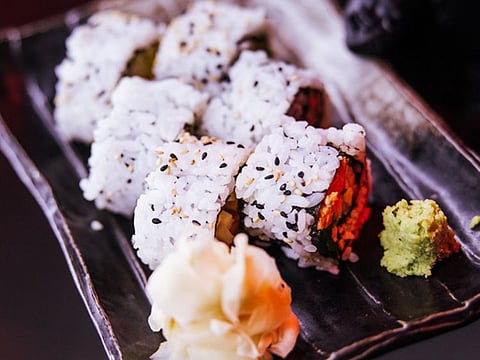Japanese thanksgiving of Aki Matsuri is a mix of street food and fine dining, all in one
Celebrate the autumn festival with food, music and a traditional recipe to try at home

The barberry and birch leaves have turned golden, the windbreakers are out… it is time for Aki Matsuri in Japan, or the Shinto festival of saying thank you to the divine forces of Nature for a bountiful harvest.
Held during the autumn season, the festival teaches us all a thing or two about the world we all currently live in.
An ode to Nature
To most of us, a majestic tree, waterfall or a mountain may look like the perfect spot to click a picture and post it on social media. For the followers of the ancient Shinto faith in Japan, these are venerable and considered the various ways in which kami – a group of deities – take form.
While there are no early records of kami in Japanese literature, these deities have dedicated shrines to ensure their offerings bring harmony between man and spirit. Shinto, when translated, becomes ‘the way of the kami’.
There are certain ways to characterise kami. For one, the kami are of two souls – nigi mitama and ara mitama. The former is a gentle soul, which can bring love and abundance when respected and destruction when taken for granted.
What is eaten?
Traditionally, this thanksgiving festival is hosted along the streets of Japan, with a variety of dishes served at yatais or temporary street food stalls. Food by Gulf News spoke to Japanese Chef Sin Keun Choi from Armani/Hashi in Dubai, who told us all about the autumn festival.
Traditional Aki Matsuri ceremonies use music, dance, prayer and offerings of food … to thank the kami (or Shinto spirits) for a fruitful rice harvest. The holiday is also an occasion to pray for the continued well-being of the community.

“Aki Matsuri, or fall festival takes place after the rice harvest to thank the deities for a fruitful harvest, as well as pray for the continued well-being of the community. Traditional Aki Matsuri ceremonies use music, dance, prayer and offerings of food … to thank the kami (or Shinto spirits) for a fruitful rice harvest. The holiday is also an occasion to pray for the continued well-being of the community. People are gathering to carnival and pray with playing the Japanese drum (Taiko).”
Some of the classic dishes which can be seen on a traditional Aki Matsuri table are “taiyaki, takoyaki, okonomiyaki, and yakisoba, which are sort of street foods” said Chef Choi.
Translating to “grilled octopus”, takoyaki are savoury pancakes with octopus and flour, grilled in hemispherical moulds, served with seaweed and dried bonito fish flakes or katsuobushi sprinkled on top.
Okonomiyaki is another savoury mini pancake, which has a base mix made from wheat flour, egg, fish broth, and white cabbage. However, it is not limited to these ingredients and can be tweaked to your liking.
Yakitori is skewered chicken and can be found at any street food stall all over Japan. The skewer, in particular, is covered with a sweet and savoury sauce (made of soy sauce, fermented rice and sugar).
Yakisoba, or fried noodles, is also served as well. This stir-fried dish is inclusive of rice noodles, Worcestershire sauce, meat and vegetables.
In the UAE
This year, however, Chef Choi decided to do things a little differently at Hashi/Armani. “I like to serve dishes in a familiar style like Matsuri. Mango skin foie gras gyoza, tuna and beluga caviar tartare with sushi crackers, a pickled tomato and seared salmon salad with aji amalio; and a delectable pairing of Hokkaido scallops, black tiger prawn tempura, beef short ribs and rougie foie gras served with vegetables. With green tea, sugar sphere for dessert, this was the meal we decided to go with.
“Matsuri celebrates rice harvest. We had prepared the sushi platter as one of the main course to showcase the fresh flavour but also involved the new signature dish added in the seasonal menu.”
A festival filled with creativity
While the food holds priority throughout the festival, the Japanese do have a series of events lined up as well.
Sumo, Shakuhachi (bamboo flute), Taiko drumming, Kamishibai (storytelling) and a tea ceremony are also some of the key performances during the festival. Crafts such as origami (Japanese art of paper folding), kabuto (paper helmets), uchiwa (fans) and traditional paper kites are also made during the festival.
Fret not, for this story is not complete without a recipe. Here is how you can make Chef Choi’s Japanese Aki Matsuri recipe for Mango Skin and Miso Foie gras surprise
Recipe:
For mango skin
For miso marinated foie gras
Method:
Sign up for the Daily Briefing
Get the latest news and updates straight to your inbox









